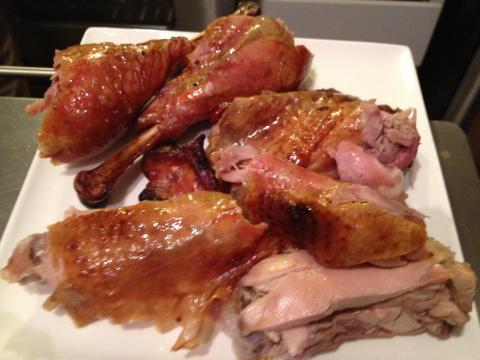
312-981-0409
33 N Dearborn St 10th Floor, Chicago, IL 60602
Serving Clients Across 7 Illinois Locations
Dining on Thanksgiving Leftovers? Protect Yourself from Food Poisoning

Thanksgiving has passed and we are now deep into the holiday shopping season. For many Americans, Thanksgiving leftovers are as important to the holiday season as eggnog, late night shopping trips, and peppermint bark. But are you keeping and serving your Thanksgiving leftovers correctly? When food is left out on a counter, as is often the case with Thanksgiving and other holiday food spreads, dangerous bacteria can grow inside it. If this bacteria is consumed, the individual who eats it can become ill.
Protect your family and other guests from food poisoning this holiday season by taking the right safety steps with your leftovers. Keep the following in mind and remember, “when in doubt, throw it out.” If you are unsure about whether food has been left out for too long or is too far beyond its expiration, err on the side of caution.
Stay Out of the Danger Zone
The “danger zone” is the range of temperatures where illness-causing bacteria can grow. It spans from 40 to 140 degrees Fahrenheit. Avoid the danger zone by cooking hot foods to an internal temperature of 140 degrees or higher and refrigerating them shortly after the meal is over. Cold foods should be kept below 40 degrees and similarly refrigerated after a meal. Try to avoid mixing these foods when serving or storing them.
Avoid Cross-Contamination
Cross-contamination occurs when bacteria is transferred from one food to another. This can happen when an affected food shares utensils or a cutting board with another. Always use fresh knives and serving utensils for each dish, especially raw or undercooked meats.
Two Hours/Two Inches/Four Days
Hot food should be refrigerated within two hours after serving. Foods should also not be more than two inches thick and all leftovers should be consumed within four days. This is known as the two hours/two inches/four days formula. The two-inch thickness is recommended because in larger portions, foods can not adequately cool to a safe temperature within the recommended time frame.
Know the Symptoms of Food Poisoning
Food poisoning, whether it is from Salmonella, Listeria, or another type of bacteria, generally causes flu-like symptoms such as the following:
- Fatigue;
- Nausea;
- Dizziness;
- Diarrhea; and
- Vomiting.
By knowing how to recognize the symptoms of food poisoning, you can easily pinpoint which food was contaminated and unsafe for further consumption. Food poisoning symptoms often occur within 12-72 hours of consuming the affected food.
Individuals with weakened immune systems are at a higher risk of being affected by food poisoning than others. This category includes pregnant women, infants, and the elderly.
Chicago Food Poisoning Attorneys
Despite your best efforts to avoid food poisoning, you can still be affected. If this happens to you and you experience significant losses, such as intensive medical treatment or time away from work, you could be entitled to monetary compensation through a food poisoning claim. Talk to an experienced personal injury attorney to learn more about seeking compensation for the losses you experienced from your food poisoning. Contact our team at Newland & Newland, LLP today to get started on your case with us.
-

Foreclosure and Bankruptcy
Visit Website -

Real Estate and Estate Planning
Visit Website -

Personal Injury
Visit Website

 Spanish
Spanish Cantonese
Cantonese















